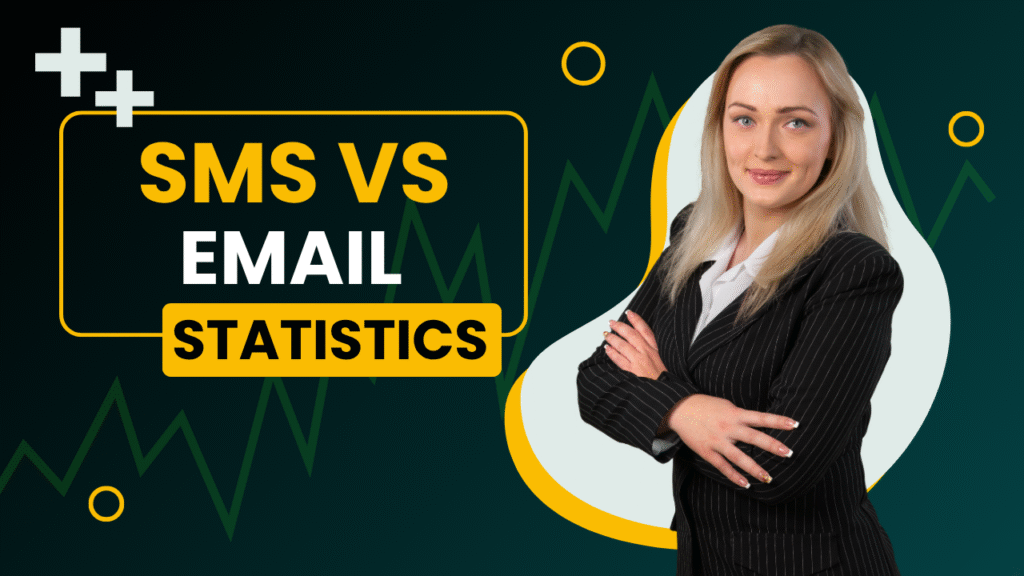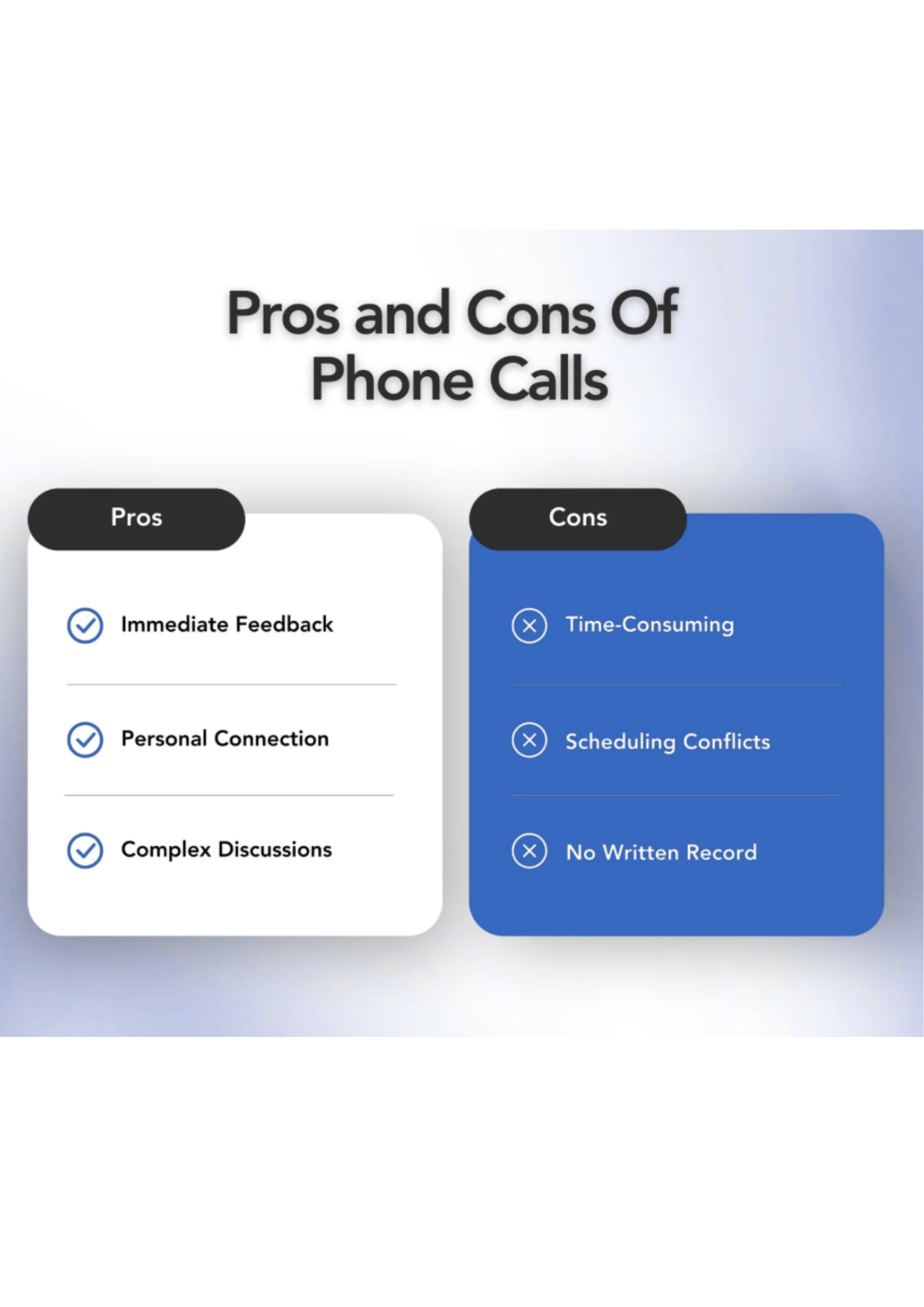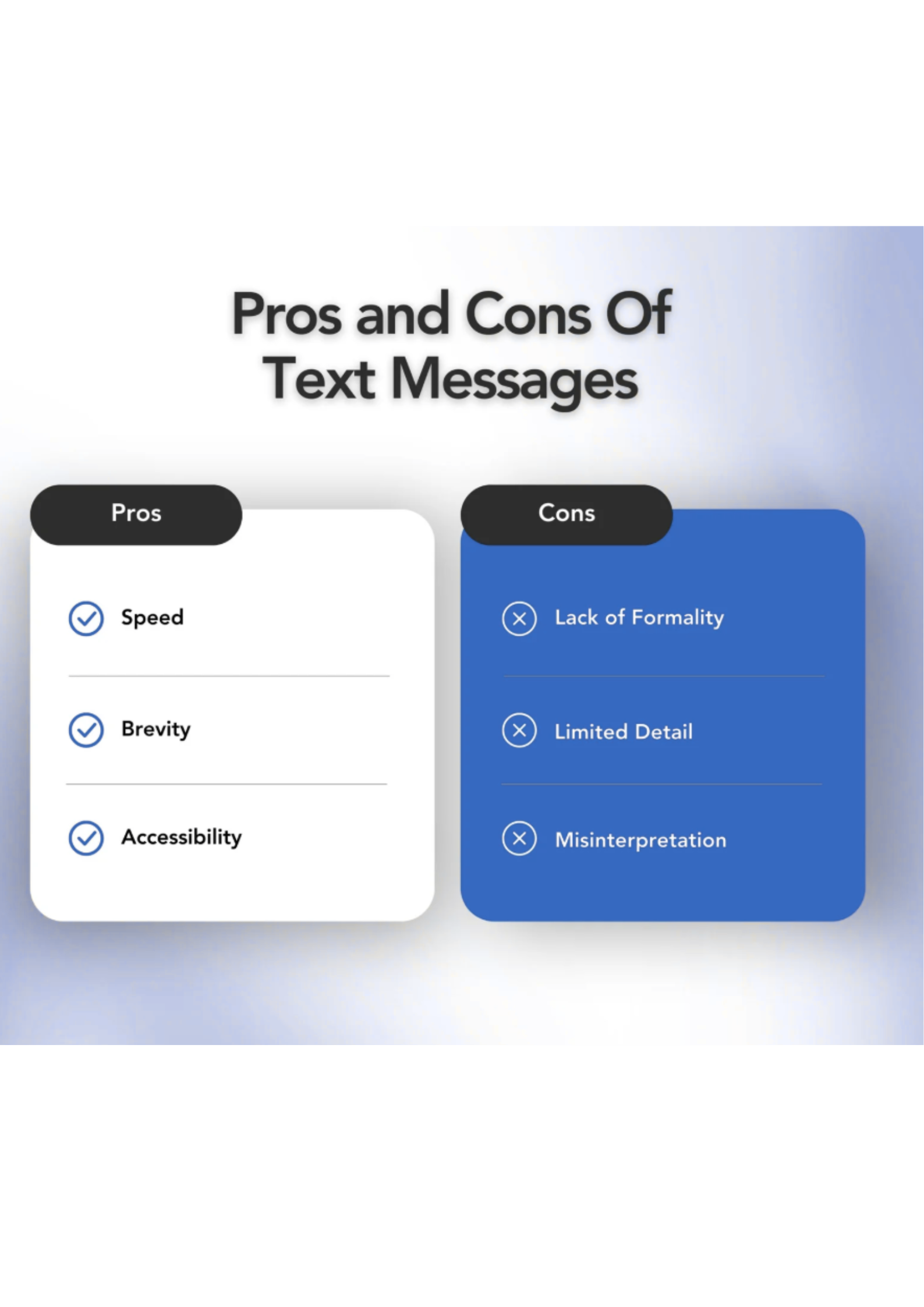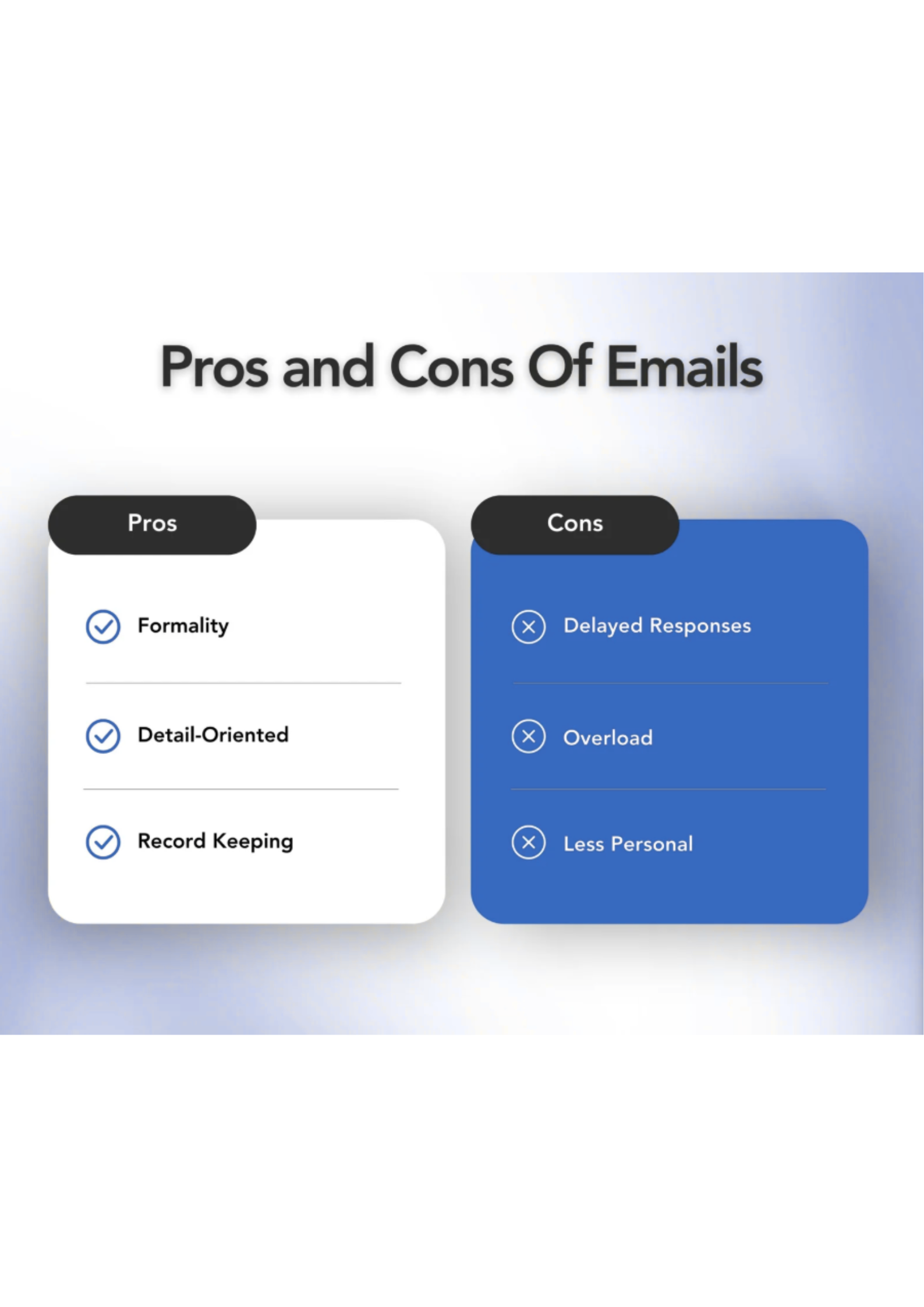- blog
- Cold Emailing
- SMS vs Email Statistics 2025: Open Rates, ROI & Performance Data

SMS vs Email Statistics: The Ultimate Guide for Better Outreach (2025)
Table of Contents
Choosing the right communication channel can make or break your sales pipeline. As a BDR or AE, you’re constantly weighing whether to send that text, make a call, or fire off another email.
Here’s the thing: SMS messages have a 98% open rate compared to email’s 20-32%, but email delivers $42 for every $1 spent. So which channel actually drives more revenue?
This guide cuts through the noise with hard data from 2025. You’ll discover when to use each channel, the latest performance metrics, and exactly how to optimize your outreach strategy. No fluff—just the stats that matter for hitting your quota.
Business Communication Methods
Here’s what successful BDRs and AEs understand: your communication channel is your competitive advantage. While your competitors spam prospects with generic messages, you’re strategically choosing the right channel for each stage of your sales process.
The modern sales landscape demands precision. BDRs need to efficiently qualify leads and book meetings. AEs need to nurture prospects through complex decision cycles. Both roles require different communication approaches at different times.
Think of it this way: using SMS for a detailed product demo is like bringing a knife to a gunfight. Similarly, sending a lengthy email when a prospect needs an immediate answer is like using a sledgehammer to crack a nut.
The key is understanding that each channel serves a specific purpose in your sales arsenal. Phone calls build relationships and handle complex discussions. SMS messages grab immediate attention and confirm next steps. Emails deliver detailed information and maintain ongoing nurturing.
💡 Need Quality Contact Data for Your Outreach?
Salesso provides verified B2B email addresses to fuel your campaigns
Start Free Trial
Call vs Text vs Email: What’s The Difference!
Let’s break down the three primary communication channels and see how they stack up in 2025.
Phone Calls: The Personal Touch
Phone calls remain the gold standard for complex, high-value conversations, despite their challenges.
The Good:
- Real-time feedback and objection handling – You can pivot your pitch instantly based on prospect reactions
- Builds genuine relationships – Voice-to-voice connection creates trust faster than text
- Executives prefer it – 57% of C-level executives and VPs prefer phone contact
The Reality Check:
- Low connection rates – 87% of Americans don’t answer calls from unknown numbers
- Success rates are tough – Cold calling success rate averages just 2.3% in 2025
- Time-intensive – It takes an average of 8 call attempts to reach a prospect
Text Messages: The Instant Connector
SMS marketing has exploded because it cuts through digital noise like nothing else.
The Numbers Don’t Lie:
- Unmatched open rates – 98% of SMS messages are opened, with 95% read within 3 minutes
- Lightning-fast engagement – 45% response rate compared to email’s 6%
- Mobile-first reality – Texting is the top mobile activity for 83% of consumers
The Catch:
- Consumer preference is nuanced – Only 35% of consumers like receiving SMS marketing messages
- Limited detail capacity – Character limits restrict complex explanations
- Professional perception – Can feel too casual for formal business communications
Email: The Professional Powerhouse
Email remains the backbone of B2B sales for good reason.
Why It Works:
- Exceptional ROI – $42 return for every $1 spent, with some studies showing $36-45 ROI
- B2B preference – 50% of B2B marketers consider email their most effective tool
- Built-in documentation – Creates automatic paper trail for complex sales processes
- Detail-friendly – Perfect for proposals, case studies, and comprehensive follow-ups
The Challenges:
- Inbox competition – People receive 333 billion emails daily, with 49% being spam
- Slower response times – Unlike texts, emails don’t guarantee immediate attention
- Open rate variability – Average open rates range from 16.97% to 32.55% across industries
When to Use Each Type of Communication
Smart BDRs and AEs don’t just blast messages—they strategically deploy each channel when it’s most effective.
Phone Calls: For High-Stakes Conversations
Use phone calls when:
- Qualifying high-value prospects – Complex discovery conversations require real-time interaction
- Handling objections – Nothing beats live conversation for overcoming resistance
- Closing deals – Final negotiations often need the human touch
- Reaching senior decision-makers – 59% of decision-makers prefer phone for initial contact
Pro Tips for Success:
- Research first – 76% of top performers research before calling
- Time it right – Calls between 4-5 PM are 71% more effective than 11 AM-12 PM
- Keep it focused – Success rates drop 61% if calls exceed 5 minutes
Text Messaging: For Quick Actions
SMS shines for:
- Meeting confirmations – 95% of texts are read within 3 minutes
- Appointment reminders – 83% of people prefer receiving appointment details via text
- Quick follow-ups – Brief check-ins after calls or meetings
- Time-sensitive updates – Urgent information that needs immediate attention
The Sweet Spot: In 2025, texting officially overtook email as the top way consumers want to reach customer service. This shift shows people increasingly expect quick, text-based business interactions.
Email: For Detailed Outreach
Email is perfect for:
- Cold outreach sequences – 8 out of 10 buyers prefer initial contact via email
- Comprehensive proposals – Detailed pitches with attachments and case studies
- Nurturing campaigns – Email is considered far better at lead nurturing than lead generation
- Content marketing – Sharing valuable insights and thought leadership
Optimization Essentials:
- Personalization is non-negotiable – Personalized subject lines can boost open rates by 50%
- Mobile-first design – 81% of emails are opened on mobile devices
- Follow-up sequences – Sending 5-8 follow-up emails can double or triple conversion rates
📊 Track Your Email Performance Like a Pro
Get detailed analytics and optimize your campaigns with Salesso
Get Started
Survey: Most Preferred Approach
Let’s cut to the data that actually matters for your day-to-day sales activities.
The SMS vs Email Head-to-Head
| Metric | SMS | |
| Open Rate | 98% | 16.97% – 32.55% |
| Response Rate | 45% | 6% |
| Time to Open | Within 3 minutes | 21.2% within first hour |
| Click-Through Rate | 10-19% | 2.62% |
| ROI | $10 for every $1 spent | $36-42 for every $1 spent |

Multi-Channel Outreach Needs Multi-Channel Contact Data
SMS, email, or calls all need verified contact info. Get complete prospect data here
Table of Contents
What This Means for Your Sales Process
The numbers tell a clear story: SMS dominates immediate engagement, but email drives higher overall ROI.
Here’s what’s happening behind these statistics:
SMS excels at grabbing attention – When you need someone to see your message immediately, nothing beats text. 84% of consumers are opted in to receive business texts in 2025, showing growing acceptance.
Email builds long-term value – While email’s immediate engagement is lower, its ability to deliver detailed value propositions and nurture relationships over time creates significantly higher returns. 75% of businesses spending $100 or less monthly on email report $21+ ROI for every dollar spent.
Channel preference varies by purpose – 35% of people find receiving the same message via email and SMS helpful, with another 27% saying it depends on the message. This suggests smart integration rather than choosing one channel.
Industry-Specific Insights
Different industries see varying performance across channels:

Find Quality Leads in Just One Click
Install SalesSo’s Chrome Extension and start collecting leads while you browse your favorite sites
